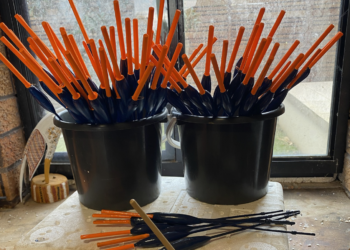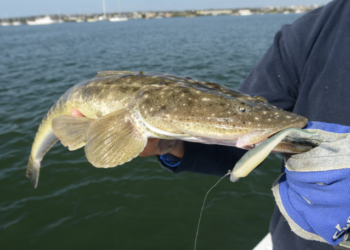To successfully target luderick, aka blackfish, you need to master some traditional rigging techniques.
THERE are plenty of reasons why luderick remain one of the most popular saltwater recreational species available. They’re relatively easy to catch, yet can take a lifetime to master, which means they provide a constant challenge. They’re also excellent on the table.
To successfully pursue luderick demands attention to detail in rigging and good powers of concentration. The second you take your eyes off the bobbing float is normally when the bait gets taken and it’s then time to wind in and bait up all over again. It’s one of the main reasons you see those wrinkled old Zen masters of float fishing pull in fish after fish while you can be standing next to them with your bait untouched. They dedicate their life to the pursuit of luderick and have the patience and attention to detail required to master their finned foe on a consistent basis.
Rigging up for luderick is a relatively straightforward process. The vast majority of the fishing is done with a weed or cabbage bait suspended below a float or bobby cork. There are situations where luderick are taken on bottom baits such as squirt worms or as bycatch by anglers potholing for drummer with cunjevoi, but the vast majority of luderick are caught by anglers float fishing.
Floats & Corks
Luderick anglers fishing from coastal rock platforms usually employ a fixed float rig. This is a relatively straightforward, tangle free means of rigging where the float is pegged or fixed to the mainline line. This means you are limited as to how deep you can set your bait below the surface, but in reality this isn’t a problem as rock luderick anglers commonly use relatively long rods in the 4 to 4.5m range. Some rock luderick anglers also use bobby corks, which can be an advantage in certain situations such as where long casts are required; however, I find them a bit hard to keep track of in foamy, rough conditions. Maybe I’m a bit old fashioned, but I find the stemmed float to be a bit easier to keep track of in boisterous conditions.
Estuarine luderick anglers generally employ a running float rig which allows them the advantage of fishing their baits much deeper than the length of their rod. The float has guides on each end which the mainline runs through and the depth is set by the use a stopper knot or small plastic stopper. These can usually be slid up and down the line to allow you to change the depth you fish your baits.
Leaders & Lines
Luderick were the original saltwater light line sportfish. They require the use of light lines and leaders to be pursued successfully. I’ve standardised on Rovex 2.7kg fluorocarbon leader for all my luderick fishing traces these days. I usually employ about a metre of fluoro trace when chasing the wily luderick. I’ve also used GSP mainline extensively in recent years with plenty of success, as I like the low stretch qualities of the material when attempting to set the hook when you have a long drift. But recently I’ve gone back to using a co-polymer float line as I’ve found these easier to use from a handling viewpoint as well as being a bit more visible when trying to track the belly in your line during drifts. I also always fish a slightly heavier mainline than trace, so if snagged up or buried by one of those rampaging rock blackfish I can bust the trace off and usually get the float back.
Connections & Terminals
It’s a tradition among many luderick anglers to snell their hooks onto their trace. This goes back to when luderick hooks featured spatulated or flattened eyes and the only way to connect them to the line was via a knot wrapped around the hook shank. The accompanying drawing by Fisho illustrator Chris Palatsides shows you how to tie the common snell; a how to video demonstration of tying the knot is available online at http://www.fishingworld.com.au/fisho-tv/knot-tying-and-rigging-videos. My favoured luderick hook patterns include the Mustad Needle Sneck, Saiko Black Bug and Daiichi 2171. I generally use sizes 6 or 8 for luderick fishing the ocean rocks and will go down to a size 10 when chasing timid biters in the estuary. The Mustad Needle Snecks feature a green finish which goes well with cabbage or green weed baits, while the Black Bug & Daiichi patterns feature a black finish which blends well with brown weed baits. I generally connect my mainline to the fluorocarbon leader with a small blackened swivel using a locked half blood knot. It’s a bit of a tradition with me as it’s the first knot I was taught by my father and grandfather as a young boy float fishing for luderick and mullet in the late 1960s. Simplicity is the key to my luderick rigging and I usually ballast my float with a small running ball sinker on the mainline between float and swivel. I always carry a small container with a wide range of small ball sinkers to allow me to ballast the float to suit the prevailing conditions. Factors that may influence this decision include how the fish are biting on the day and the sea conditions.
Luderick fishing is all about attention to detail and being willing to experiment until you find the right bait and rigging combination.























